April 13-17, 2010
To go Back at any time,
use Browser’s “Previous Page”
We began and ended our Nashville experience with our favorite activities: bicycling and dancing. All that was left to do in between was to cram in as much as we could.
The Ashland City Rail-Trail can be reached by car from downtown Nashville in about 30 minutes. On a very warm day, the shady, paved and nearly level bike path was most welcome.
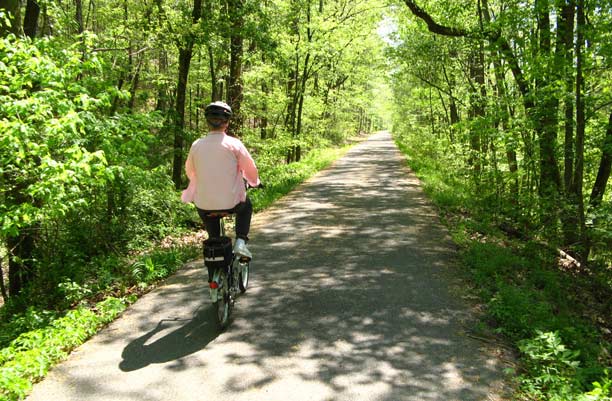
The path, mostly parallel to the Cumberland River, crosses it once:
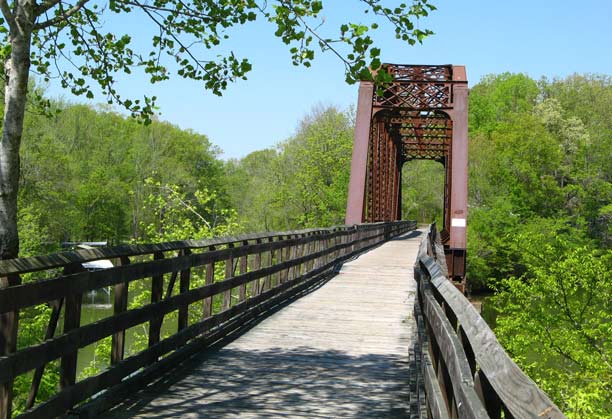
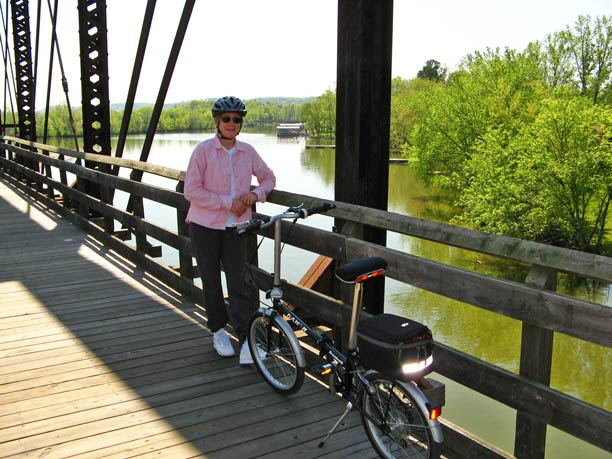
Upstream, the Cumberland flows through the middle of Nashville (and that is where it did so much damage three weeks after our visit.)
Looking down from the trail onto a farmer’s handiwork, we were not sure what function this structure had originally but it was probably not to store hay.
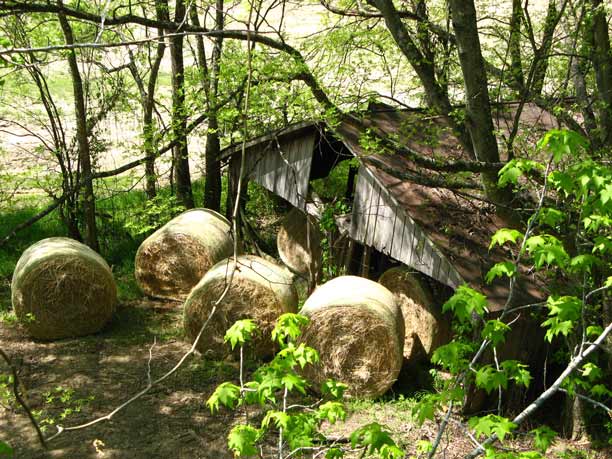
Normally, a number of small waterfalls line the trail but dry conditions in recent weeks had eliminated them. What we most enjoyed were the birdsongs and solitude as well as the exercise.
The Grand Ole Opry House made our afternoon’s agenda. Since 1974, the home of the famous radio show has not been in downtown Nashville but well east of there near the Gaylord Opryland Resort:
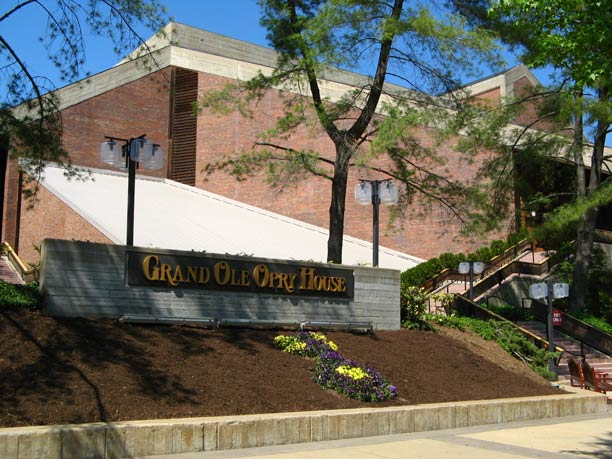
This newer theater can seat 4400. Although we couldn’t see a show in this “Opry House,” we did opt for a group backstage tour which included a few minutes on stage. Patty and I can truthfully boast that we danced on the stage of the Grand Ole Opry!
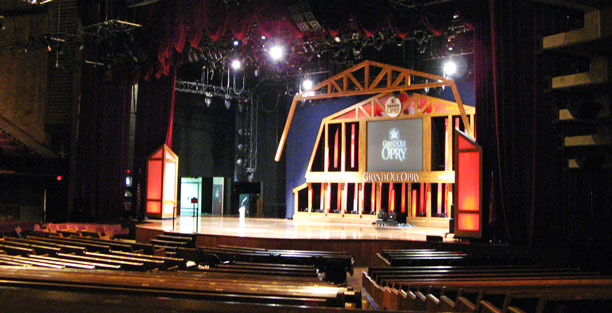
Okay! .... Okay! .... It was for only 10 seconds but it was more than most do! You never know when a talent scout will be on the lookout.
In the nearby museum, Patty, now on a roll, wowed the crowd speechless with her impersonation of Patsy Cline:

Don’t know about that fellow in the aisle though.
To complete an already full day, we walked over to the Gaylord Opryland Resort and entered here:
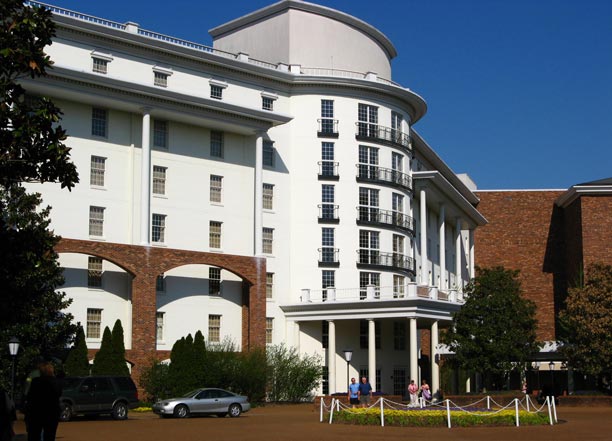
This resort is an immense complex with three extremely large interior garden areas. Each is air-conditioned with many attractive water features and subtropical plants. The three pictures below provide a glimpse of the interior during our visit:
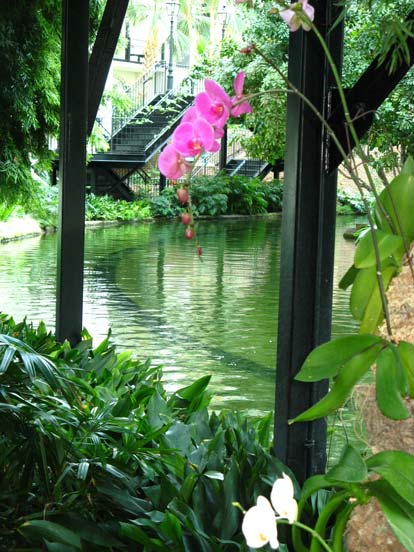
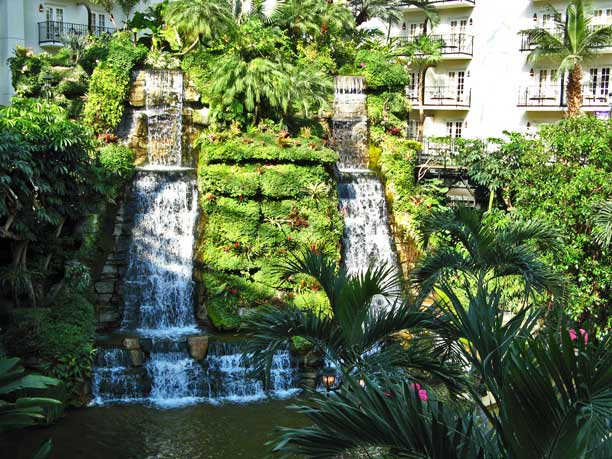
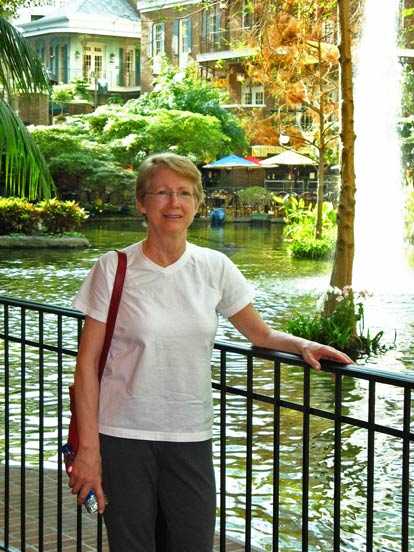
After a night’s rest, we explored downtown Nashville on foot and with the help of the new blue buses, which are free to use. Like many large cities in recent years, Nashville has been cleaned up considerably and makes for an interesting and safe place to spend the day.
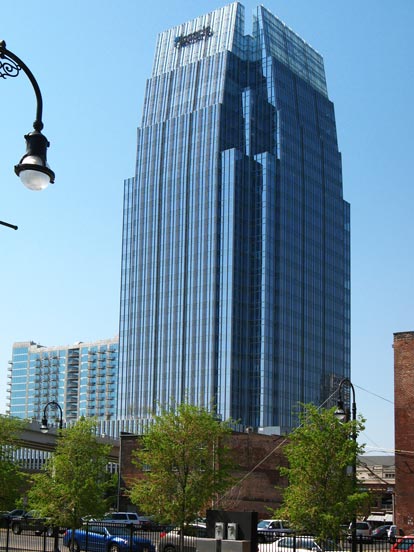
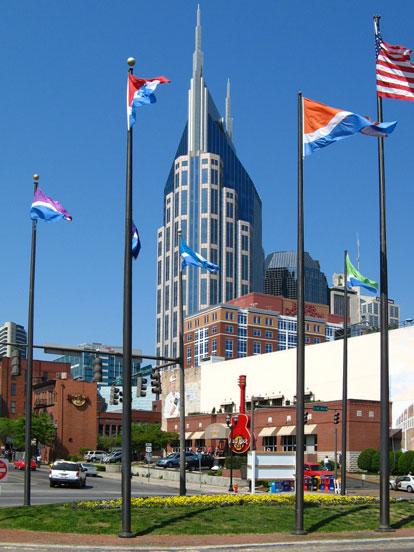
The pointy-haired AT&T building must surely have been inspired by Dilbert:
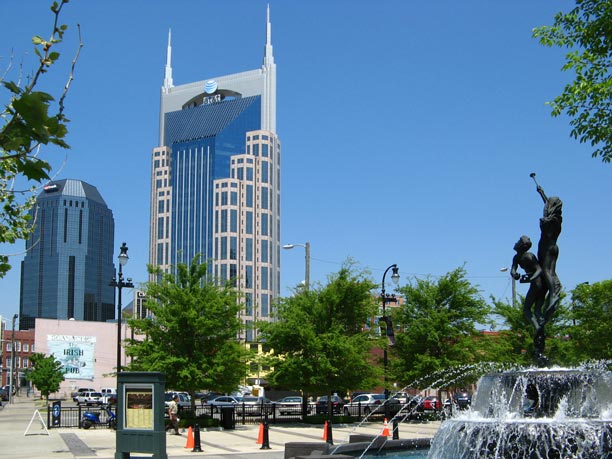
The complex below has had several names in recent years; it is now called the “Sommet Center:”
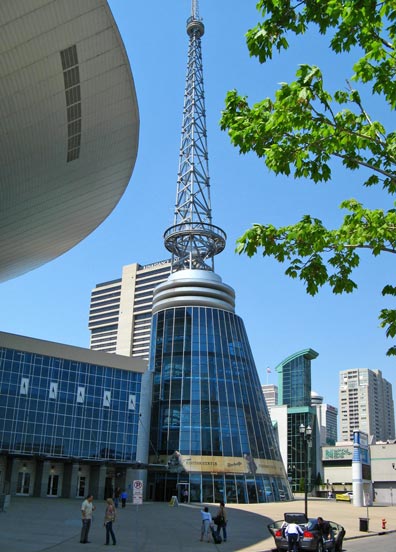
Although the city’s Tourist Information can be found within, the attached arena is owned by the local Sports Authority. National Hockey League games, Figure Skating and Gymnastics championships, basketball tournaments, religious gatherings, concerts and Broadway shows have all been held in this arena.
With the afternoon warming up, we were glad of a shady spot to rest:
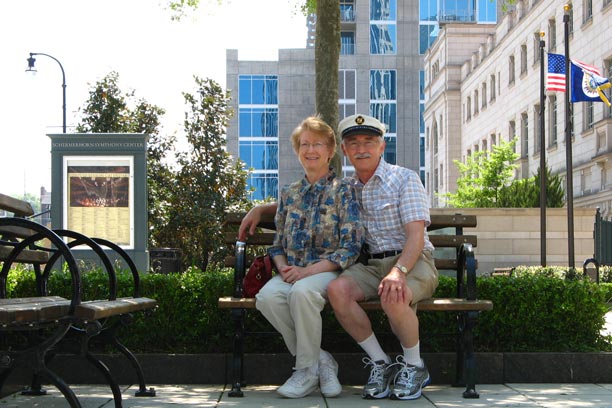
We did not enter the 1859 Tennessee State Capitol Building but it makes a handsome sight above the Bicentennial Mall:
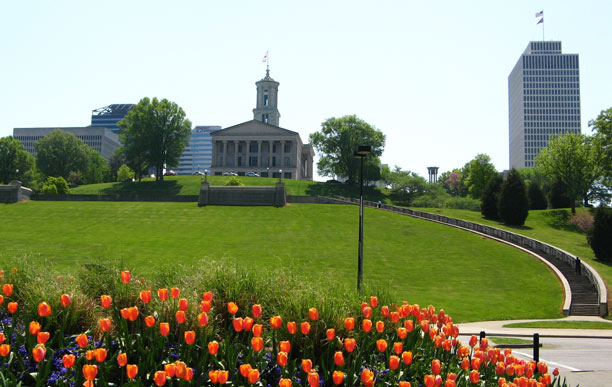
To get into some real country music, our evening was capped off with a “Country Classic Show” at the Ryman Auditorium. The 2200 seat Ryman Hall, originally built as a church, was the home of the Grand Ole Opry from 1943 to 1974.
Our third day of getting acquainted with Nashville brought us to Centennial Park (opposite Vanderbilt University). The park’s centerpiece is the Parthenon, which functions today as an art museum:
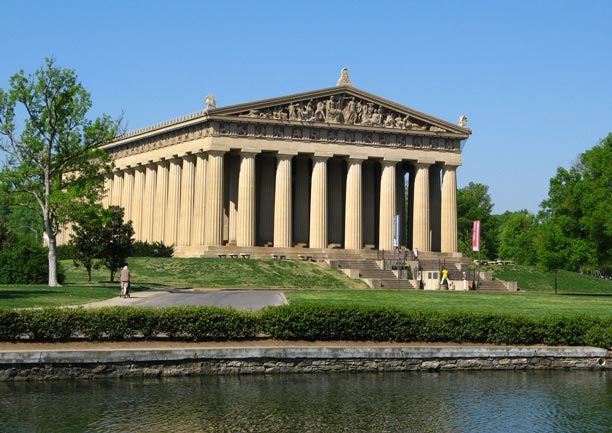
This is a full-scale replica of the Parthenon in Athens, Greece, although this one is not constructed of marble. It is made, instead, of brick, stone and concrete. Nevertheless, it took just as long for the City of Nashville to build it as the ancient Greeks took with the original. A predecessor Parthenon, made of plaster, stood here previously as far back as 1897. That temporary building, built for the Tennessee Centennial Exposition, was replaced by this permanent structure between 1921 and 1931.
“Why is it there?” you may ask. Well, it’s all in keeping with Nashville’s nickname, “Athens of the South.” Nashville had already earned that appellation in the 1850’s by having established numerous higher education institutions as well as being the first southern city to establish a public school system.
Our last evening in this home of country music was spent on a dance floor, polishing off a busy but satisfying stay in Nashville. A 3-piece band entertained us and other seniors at the “Fifty Forward Knowles Center,” even playing a polka as well as the expected Tennessee Waltz. Beautiful as the wood floor was, though, we did miss the slick vinyl surface back home in Tyrone PA.